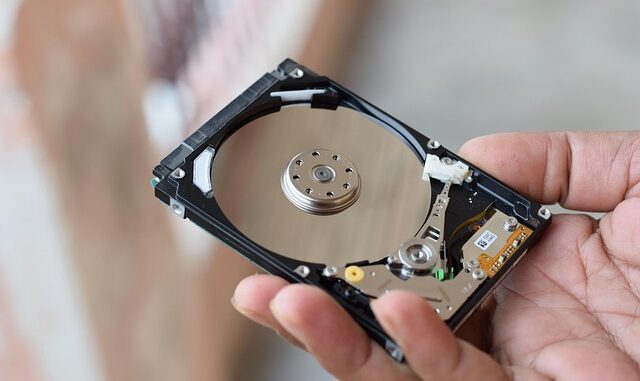
Summary
This article provides a step-by-step guide to optimizing storage performance, covering key areas such as hardware upgrades, software configurations, and best practices. By following these actionable steps, readers can significantly improve data access speeds, enhance application performance, and maximize their storage investments. Whether dealing with cloud storage, on-premises systems, or hybrid environments, the strategies presented here offer valuable insights for achieving optimal storage performance.
Award-winning storage solutions that deliver enterprise performance at a fraction of the cost.
Main Story
Boosting storage performance, it doesn’t have to be this daunting, complex task you might imagine. Actually, if you take the right approach, you can see some pretty significant improvements in data access speeds and, honestly, just a better overall system performance. It’s all about being smart and systematic.
1. First things first: Figure Out Where You Stand
Before you go changing things, you really need to understand what’s happening right now. Think of it like a doctor diagnosing a patient; you need a baseline. So, use some performance monitoring tools, and, I know, I know, it sounds tedious but it’s crucial. Look for the bottlenecks, the times when things are really getting hammered, and where you might see some room to grow. This data? It’s your roadmap. Pay close attention to metrics like IOPS (Input/Output Operations Per Second) – which is pretty important – throughput, and also, really importantly, latency. These are your key indicators that things are working well… or not.
2. Look at the Hardware; Is it Holding you Back?
If your hardware’s ancient, it might be time for an upgrade. It’s like trying to run a marathon in flip-flops, you know? Consider switching to faster storage like Solid State Drives (SSDs). I mean, who doesn’t love an SSD? Or, maybe adding more memory to your system. See if those old hard drives, the RAID controllers, even the network infrastructure, can keep up with the workload. Think about faster storage like NVMe SSDs, or maybe even a decent RAID config for speed and redundancy. And if, you know, the budget allows, all-flash arrays are a game-changer, especially when it comes to IOPS and latency.
3. Configuration is Key; Don’t Neglect It
Proper setup; that’s what’s going to squeeze the most out of your storage performance. Adjust settings within your OS, storage controllers, and applications. You might have to enable caching, adjust queue depths – all that stuff. If you’re working with databases, there are always tweaks you can make there. One time, I spent hours just optimizing queries, and it made a huge difference. Seriously though, make sure your storage controllers have the correct RAID levels, cache settings, and are running on up to date firmware too; it makes all the difference.
4. Data Deduplication and Compression: It Works Like a Charm
To be honest, these are your space savers, but they can also boost performance! Deduplication gets rid of duplicate data and compression reduces file size. Less to read or write, right? It’s like packing a suitcase; you’re only bringing what you need and it takes up less room. These tricks are great for backups, archives, and especially if you have a bunch of virtual machines. It will also keep costs down and make storage and retrieval of data faster.
5. Caching; It’s Your Friend
Caching, it’s a smart move. It’s like having a shortcut, storing frequently used data in faster storage. This drastically improves read performance because you’re not going to slower storage each time. Think about using both server-side caching and storage controller caching. And RAM caching? It keeps that data readily available in memory, it’s crazy fast.
6. Software Optimization, Don’t Forget That!
Make sure everything, your OS, applications, databases, are setup for optimal storage performance. Update drivers, apply patches and optimize application settings to maximize efficiency. Databases? Look at indexing strategies, query optimization, and data partitioning. Optimize those queries and indexes, and, honestly, it can make such a difference to retrieval speed. Finally, make sure applications are using resources efficiently too and minimizing I/O operations.
7. Monitor and Tweak, It’s Never Really ‘Done’
Keep an eye on things after you make changes. Use the tools to track key metrics and look out for new bottlenecks. It’s ongoing, you know, like a plant that needs regular care. Analyse those metrics to make sure those optimizations are working and that you spot any new problems quickly. Also consider, stuff like storage tiering, and just keep adjusting your setup as needed. Performance tuning isn’t a once and done; it’s a process. It takes a little effort, but the rewards are worth it. By following these steps, you can significantly boost storage performance which will give you quicker data access, quicker apps and a more effective storage solution. So, keep at it!


So, deduplication is like packing a suitcase, eh? I always thought it was more like that digital purge I keep meaning to do… except for the data hoarding I’m guilty of. Maybe I should focus on that first?
That’s a great point! Maybe tackling the data hoarding *before* implementing deduplication would yield even better results. Think of it as decluttering your closet before neatly organizing what’s left. Thanks for adding that perspective!
Editor: StorageTech.News
Thank you to our Sponsor Esdebe – https://esdebe.com